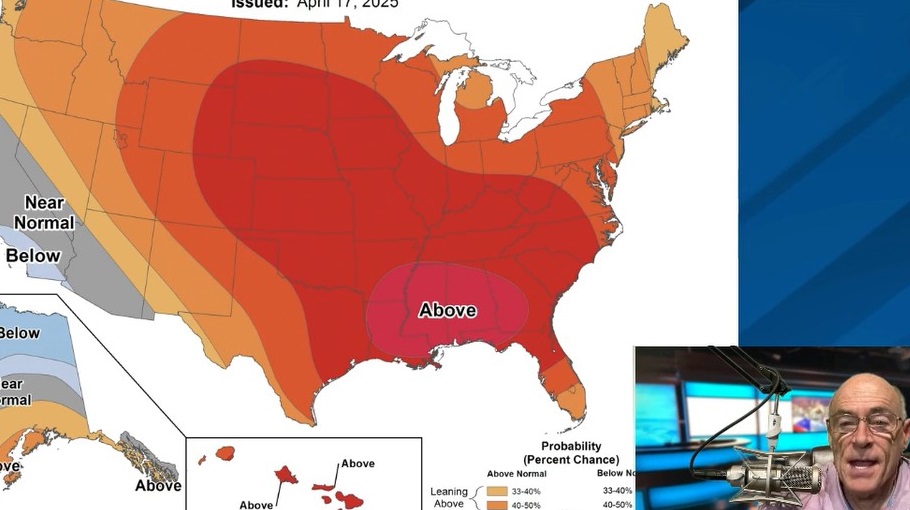Here are ways to prevent stress, emotional eating from making your COVID-19 sequester even worse

Many grocery stores are offering special hours for seniors to help ensure they get the nutritious food they need in a safe environment. (Getty Images)
Stress. Many of us feel that emotion right now as our daily rhythms and routines shift with the effects of COVID-19 precautions.
According to the Mayo Clinic, “our strongest food cravings can hit when we’re at our weakest point emotionally. We may turn to food for comfort — consciously or unconsciously — when facing a difficult problem, feeling stressed or even feeling bored.

Making the right food choices is more important during moments of stress.(Getty Images)
Cue the cookies, chips, ice cream and other sugar, fat and calorie-laden foods. Nielsen data tracking has found that Americans have been stocking up on these comfort foods over the past few weeks, with no expected slow in sales.
The Centers for Disease Control and Prevention (CDC) has encouraged us to learn how to cope with stress, to make ourselves, the people we care about and our communities stronger, but focusing on nutrition and healthy eating can seem daunting as stores vary their hours and we are encouraged to “social distance.”
To help take the guesswork out of grocery shopping, and make it easier to make positive choices for our physical and emotional health, here is a list of grocery stores with quick store locators, hours designated for vulnerable populations, and information about grocery delivery:
- Aldi store locator: https://www.aldi.us/stores/
- In some communities, Instacart is an Aldi delivery partner.
- Dollar General store locator: https://www.dollargeneral.com/store-locator.html
- The first hour of each day will be dedicated to senior customers.
- CVS store locator: https://www.cvs.com/store-locator/cvs-pharmacy-locations/Alabama
- In some communities, Instacart and Shipt serve as CVS delivery partners.
- Costco store locator: https://www.costco.com/warehouse-locations
- Beginning March 24, on Tuesday and Thursday mornings from 8 to 9 will be dedicated to members age 60 and older.
- In some communities, Instacart and Shipt serve as Costco delivery partners.
- Family Dollar store locator: https://www.familydollar.com/store-locator
- Piggly Wiggly store listings for Alabama: https://www.pigglywiggly.com/stores/AL
- In some communities, Shipt is a Piggly Wiggly delivery partner.
- Publix store locator: https://www.publix.com/locations
- Beginning Tuesday, March 24, Tuesday and Wednesday mornings from 7 to 8 will be dedicated to customers age 65 and over. In addition, the pharmacy will be open during that time for seniors.
- In some communities, Instacart and Shipt serve as Publix delivery partners.
- Sprouts store locator: https://www.sprouts.com/store/al/hoover/hoover/
- In some communities, Instacart is a Sprouts delivery partner.
- Target store locator: https://www.target.com/store-locator/find-stores/birmingham,al
- Beginning March 18th, the first hour of shopping on Wednesdays is reserved for vulnerable or at-risk populations, as defined by the CDC, including those over 65 years old and pregnant women.
- In some communities, Shipt is a Target delivery partner.
- Trader Joe’s store locator: https://locations.traderjoes.com/al/birmingham/
- Beginning March 16, store hours are 9 a.m. to 7 p.m.
- Every day between 9 a.m. and 10 a.m., staff will maintain an additional line outside the front door for senior customers.
- Walgreens store locator: https://www.walgreens.com/storelocator/find.jsp
- Beginning March 24, Tuesday mornings from 8 to 9 will be dedicated to senior citizens, their caregivers and immediate family.
- Walmart store locator: https://www.walmart.com/store/finder?location=35216&distance=50
- Beginning March 24 through April 28, Walmart will open one hour earlier on Tuesdays for customers age 60 years and older. Store hours vary by Walmart location. Please use the store locator to find your closest store.
- In some communities Walmart has a grocery delivery membership plan. https://grocery.walmart.com/delivery-unlimited/landing
- Whole Foods Market store locator: https://www.wholefoodsmarket.com/stores
- Currently in Birmingham, Huntsville, Mobile, and Montgomery, stores will be dedicated to customers age 60 years and older from 7 a.m. to 8 a.m.
- Prime customers in Birmingham, Huntsville, Montgomery and Mobile have access to PrimeNow Whole Foods grocery delivery. For details, visit: https://primenow.amazon.com/onboard.
- Winn-Dixie store locator: https://www.winndixie.com/locator
- Currently, stores are open from weekdays from 8 a.m. to 9 a.m. for seniors and high-risk customers. In addition, the pharmacy will be open during that time.
- In some communities, Shipt is a Winn-Dixie delivery partner.
To help fill your grocery list or use the groceries in your pantry, Dr. Ann Kulze, founder and CEO of Just Wellness, has a full list of recipes, including many kid-friendly recipes.
The Mayo Clinic has tips to help control emotional eating triggers:
- Keep a food diary. Write down what you eat, how much you eat, when you eat, how you’re feeling when you eat and how hungry you are. Over time, you might see patterns that reveal the connection between mood and food.
- There are a number of free apps made for food tracking, including MyFitnessPal, Lose It! and Daily Dozen – that help you keep track of the foods Dr. Michael Greger recommends in his international New York Times best-selling book “How Not to Die.”
- Tame your stress. If stress contributes to your emotional eating, try a stress management technique, such as yoga, meditation or deep breathing.
- If you want to try meditation, the Birmingham Shambhala Center offers online mediation sessions, via Zoom, on Mondays, Tuesdays and Thursdays. For more information, visit: https://birmingham.shambhala.org/
- Have a hunger reality check. Is your hunger physical or emotional? If you ate just a few hours ago and don’t have a rumbling stomach, you’re probably not hungry. Give the craving time to pass.
- Get support. You’re more likely to give in to emotional eating if you lack a good support network. Lean on family and friends or consider joining a support group.
- Fight boredom. Instead of snacking when you’re not hungry, distract yourself and substitute a healthier behavior. Take a walk, watch a movie, play with your cat, listen to music, read, surf the internet or call a friend.
- Planet Fitness is live streaming free, daily “Work-Ins,” at 6 p.m. on Facebook. The company said its trainers, and occasionally surprise celebrity guests, will lead the 20-minute workouts.
- Fitness Blender provides free workout videos for every level, many that include no equipment.
- Yoga with Adriene on YouTube, provides a variety of levels, including a 30-day program.
- Strong by ZUMBA on YouTube provides a variety of free HIIT workouts, including multiple languages.
- Take away temptation. Don’t keep hard-to-resist comfort foods in your home. And if you feel angry or blue, postpone your trip to the grocery store until you have your emotions in check.
- Don’t deprive yourself. When trying to lose weight, you might limit calories too much, eat the same foods repeatedly and banish treats. This may just serve to increase your food cravings, especially in response to emotions. Eat satisfying amounts of healthier foods, enjoy an occasional treat and get plenty of variety to help curb cravings.
- Snack healthy. If you feel the urge to eat between meals, choose a healthy snack, such as fresh fruit, vegetables with low-fat dip, nuts or unbuttered popcorn. Or try lower calorie versions of your favorite foods to see if they satisfy your craving.
- Learn from setbacks. If you have an episode of emotional eating, forgive yourself and start fresh the next day. Try to learn from the experience and make a plan for how you can prevent it in the future. Focus on the positive changes you’re making in your eating habits and give yourself credit for making changes that’ll lead to better health.
As we continue to adapt to the changes necessitated by the precautions and effects of COVID-19, it is important to be cognizant of how stress affects us and those we care about. For more information about managing anxiety and stress, visit the CDC’s website.





